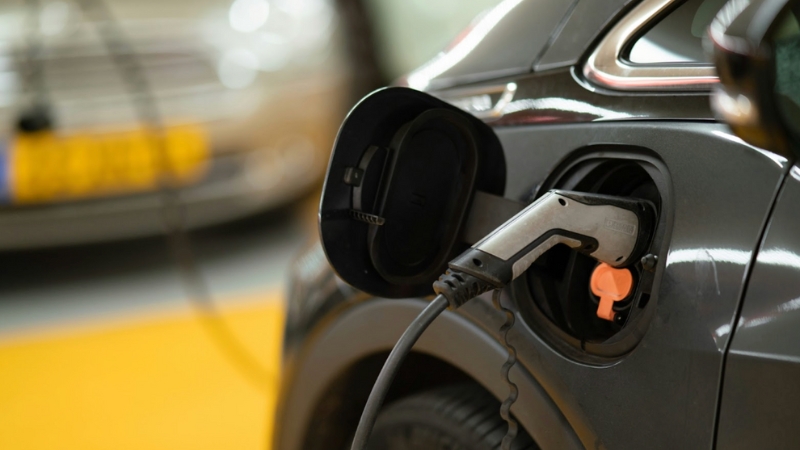The electric vehicle (EV) revolution is transforming the automotive industry and redefining our approach to energy consumption. As the world strives for a sustainable future, EVs are becoming increasingly popular due to their potential to reduce greenhouse gas emissions and decrease reliance on fossil fuels. Central to this revolution is lithium, a critical component of the lithium-ion batteries that power these vehicles. This blog post explores the global impact of the EV revolution and the pivotal role of lithium in this transformative journey.
The Rise of Electric Vehicles
In recent years, the adoption of electric vehicles has accelerated at an unprecedented pace. Advances in battery technology, supportive government policies, and growing consumer awareness of environmental issues have all contributed to this surge. Major automotive manufacturers are committing to electrification, with plans to phase out internal combustion engines over the next two decades. Companies like Tesla, Nissan, and Chevrolet, along with traditional giants like Ford, General Motors, and Volkswagen, are investing heavily in EV technology.
The global EV market is expected to continue its rapid growth. According to the International Energy Agency (IEA), the number of electric cars on the road worldwide is projected to reach 145 million by 2030, up from about 10 million in 2020. This shift is not only transforming the automotive industry but also creating significant ripple effects across various sectors, particularly the energy and mining industries.
Lithium: The Heart of EV Batteries
Lithium-ion batteries are the most widely used battery type for electric vehicles due to their high energy density, long lifespan, and relatively lightweight properties. These batteries consist of several key materials, including lithium, cobalt, nickel, and graphite. Among these, lithium is crucial as it enables the high energy storage capacity needed for long-range EVs.
The demand for lithium has skyrocketed alongside the rise of EVs. The global lithium market, which was valued at around $4 billion in 2020, is expected to grow exponentially in the coming years. This surge is driven by the need for more lithium-ion batteries, not just for EVs but also for renewable energy storage solutions and consumer electronics.
The Global Lithium Race
The global race to secure lithium supplies is intensifying. Currently, the majority of lithium production is concentrated in a few countries. Australia is the largest producer, followed by Chile and China. These countries benefit from rich lithium resources and established mining industries. However, the geopolitical dynamics of lithium production are complex, and the race to control lithium supply chains is heating up.
Key Players in the Lithium Market
- Australia: Leading the world in lithium production, Australia supplies nearly half of the global lithium. The country’s abundant hard rock lithium reserves and well-established mining infrastructure make it a dominant player.
- Chile: Home to the vast lithium brine deposits in the Atacama Desert, Chile is another major producer. The country benefits from high-grade lithium reserves and favorable extraction conditions.
- China: While China has significant lithium resources, its strength lies in its control over lithium processing and battery manufacturing. China dominates the global supply chain for lithium-ion batteries, making it a crucial player in the EV revolution.
- United States: With large lithium reserves, particularly in Nevada, the U.S. is ramping up efforts to boost domestic production. Projects like the Thacker Pass mine are poised to increase U.S. lithium output significantly.
Challenges and Opportunities
The rapid growth in lithium demand presents both challenges and opportunities.
Challenges
- Environmental Impact: Lithium mining and extraction can have significant environmental consequences, including water depletion, habitat destruction, and pollution. Sustainable mining practices and advancements in recycling technology are essential to mitigate these impacts.
- Supply Chain Vulnerabilities: The concentration of lithium production in a few regions poses supply chain risks. Any disruption, whether due to geopolitical tensions or environmental regulations, could impact global lithium availability.
- Technological Innovation: While lithium-ion batteries are currently the best available technology, ongoing research into alternative battery chemistries, such as solid-state batteries and sodium-ion batteries, could potentially reduce reliance on lithium.
Opportunities
- Economic Growth: The expansion of the lithium industry presents significant economic opportunities. Countries with rich lithium resources can benefit from increased investment, job creation, and technological advancements.
- Sustainability: The development of sustainable lithium extraction and recycling methods can help minimize environmental impacts and create a more circular economy for battery materials.
- Energy Independence: By securing domestic lithium supplies and investing in local battery manufacturing, countries can reduce their dependence on foreign energy sources and enhance their energy security.
The Road Ahead
The electric vehicle revolution is reshaping the global landscape, driving demand for lithium and spurring innovation across multiple industries. As nations around the world strive to achieve their climate goals and transition to cleaner energy systems, the importance of lithium will only continue to grow.
To navigate this new era, collaboration between governments, industries, and researchers is essential. By addressing the challenges and seizing the opportunities presented by the EV revolution, we can pave the way for a sustainable, electrified future.
The journey towards widespread electric vehicle adoption and a greener world is well underway, with lithium at its core. As we look ahead, the race for lithium will play a crucial role in shaping the next chapter of global energy and transportation.





